
The automobile has long been a symbol of status, power, and autonomy, and ever since King Tut rolled through Egypt on his golden-wheeled chariot, artists and drivers have dreamed up mobile masterpieces. A striking photographic tribute and social history, Road Show navigates a path across high and low art, showing how people around the world are transforming their vehicles into stunning folk art, obsessive collections, social commentary, and visionary performances. In this fascinating showcase, we see how Henry Ford’s motto, “Any color as long as it’s black,” has been hung out to dry. From the Wienermobile to a hand-carved wooden Ferrari that drives in the canals of Venice to a giant red stiletto heel, Road Show brings the “museum of the streets” to life.
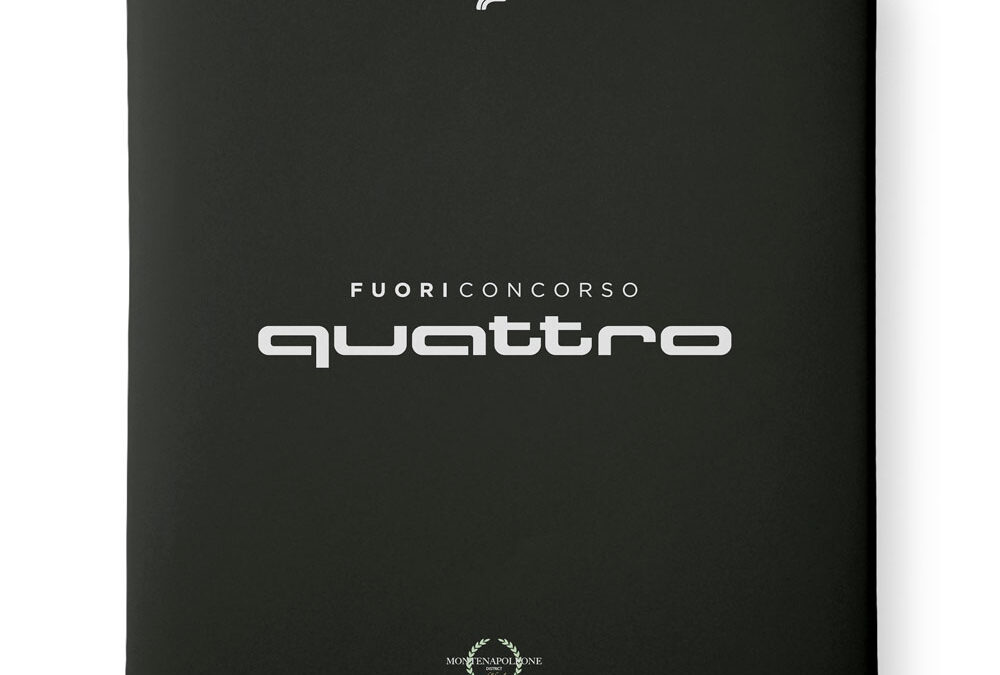
FuoriConcorso quattro is the celebration of the Audi “quattro” technology:
a selection of the most innovative and iconic Audi cars photographed at
night during lockdown, in a never seen before empty streets of
MonteNapoleone District, resulting in a unique spectacle of rarely seen
concept cars, race cars and production cars. MonteNapoleone District, a
symbol of excellence and innovation in the fashion world is the perfect place
to celebrate a technology which changed the automotive world forever…
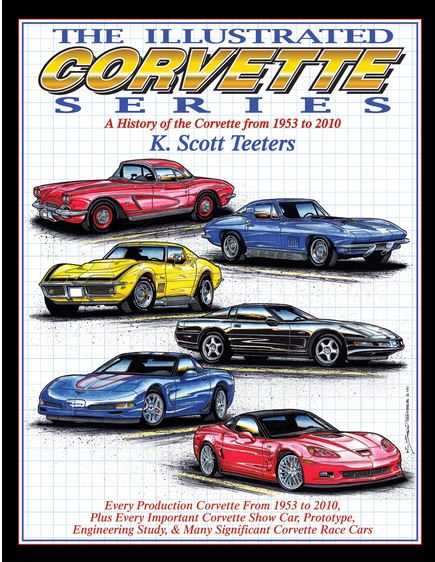
The Chevrolet Corvette began its storied existence in 1953 as an almost haphazard attempt at building an American sports car to rival the European offerings of the time. Since then, its history has ebbed and flowed with the times, with stunning peaks and valleys of design, horsepower, and quality. It has grown to be an American icon, representing the capability of domestic engineering on the streets and racetracks of the world.
The entire history of the car is represented on the pages of The Illustrated Corvette in artful style. Author/artist Scott Teeters delivers well-researched facts and figures on all of the production Corvettes to date, and many of the remarkable racing cars, special editions, concept cars, and tuner variants crafted over the years. Additionally, the author offers his passionate review of a potential new Corvette design.
Anyone who has ever admired a Corvette (either from afar or from the enviable position behind the wheel) will appreciate and enjoy The Illustrated Corvette. The thoughtful opinions and facts presented, teamed with the incredibly detailed artwork, makes this book a truly unique offering.
The photos in this edition are black & white
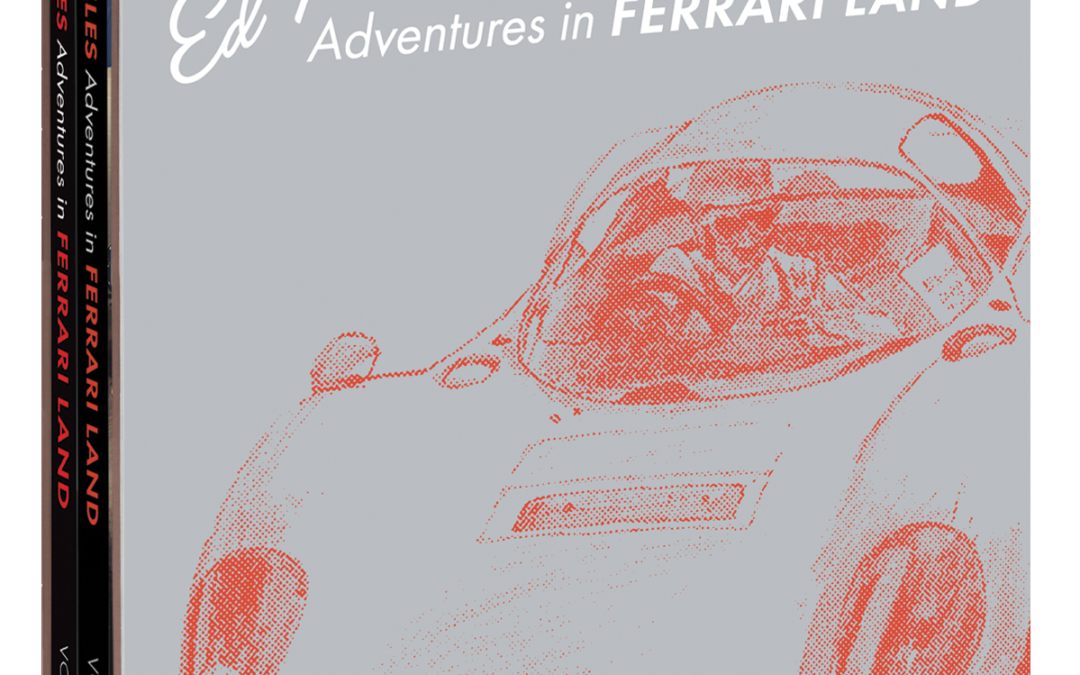
The greatest vintage Ferraris carry stories with them, and part of the value of each unique car is the depth and richness of its history. Edwin K. Niles has been buying and selling Ferraris for most of his life, and the more than one hundred that passed through his hands include some of the most storied and rare examples in existence.
This lavish two book set covers the cars and writings of Niles, offering Ferrari enthusiasts an intimate look into the heritage of some of the world’s most desirable collectible Ferraris.
In Volume 1, Niles recounts his encounter with each car, touching upon the its history and including colorful stories such as how he discovered a 1954 250 Europa Coupe in an underground storage garage while on holiday in Italy and bought it immediately after the owner took him on a screaming ride through the narrow streets of Rome.
The stories of Ed and his cars take you on a ride through Ferrari history, meeting the historians, collectors, and celebrities who live and breathe the cars that bear the prancing horse.
Volume 1 of this set includes a complete inventory of all the Ferraris owned by Niles, with archival photography, drawings, records, and entertaining stories about each one.
Volume 2 collects Niles’s writings about Ferrari, including his colorful column, “Oldtimer’s Corner,” that ran in the FCA Southwest Region’s Sempre Ferrari. Included on those pages, are accounts of a ring of Italian car counterfeiters, the Berlinetta in the barn, the ill-fated but fast Dino, and more tales of living and loving Ferrari.
In short, if you love and live Ferrari, this two-volume set is a must.
2 Volumes in slipcase
372 Pages
12 × 12 × 3.5 in
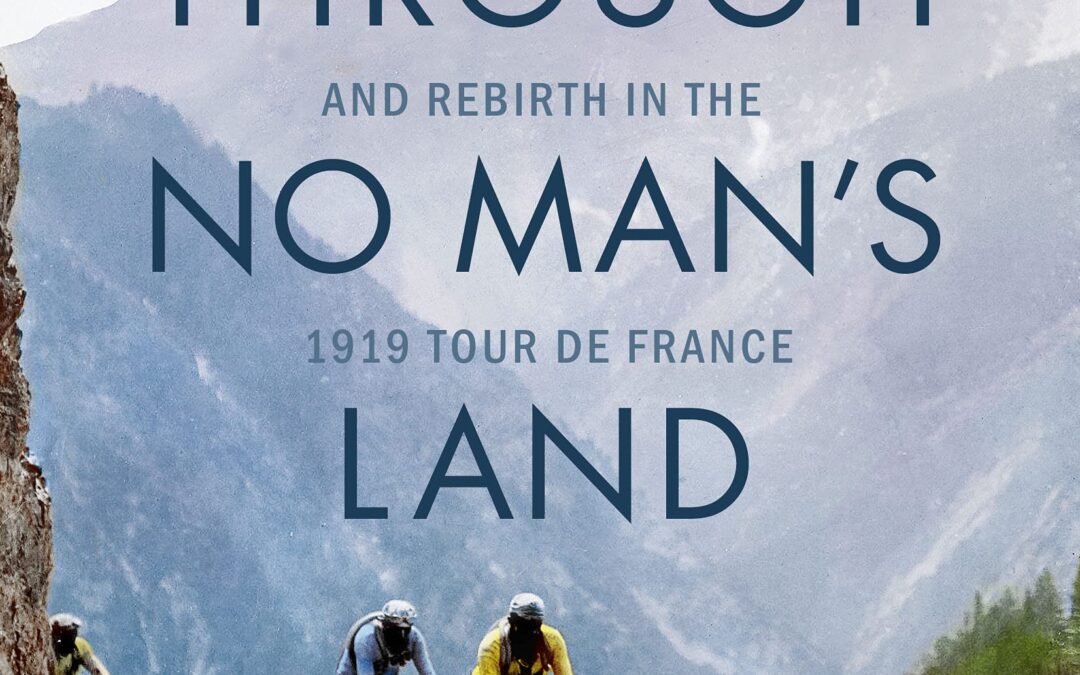
The inspiring, heart-pumping true story of soldiers turned cyclists and the historic 1919 Tour de France that helped to restore a war-torn country and its people.
On June 29, 1919, one day after the Treaty of Versailles brought about the end of World War I, nearly seventy cyclists embarked on the thirteenth Tour de France. From Paris, the war-weary men rode down the western coast on a race that would trace the country’s border, through seaside towns and mountains to the ghostly western front. Traversing a cratered postwar landscape, the cyclists faced near-impossible odds and the psychological scars of war. Most of the athletes had arrived straight from the front, where so many fellow countrymen had suffered or died. The cyclists’ perseverance and tolerance for pain would be tested in a grueling, monthlong competition.
An inspiring true story of human endurance, Sprinting Through No Man’s Land explores how the cyclists united a country that had been torn apart by unprecedented desolation and tragedy. It shows how devastated countrymen and women can come together to celebrate the adventure of a lifetime and discover renewed fortitude, purpose, and national identity in the streets of their towns.
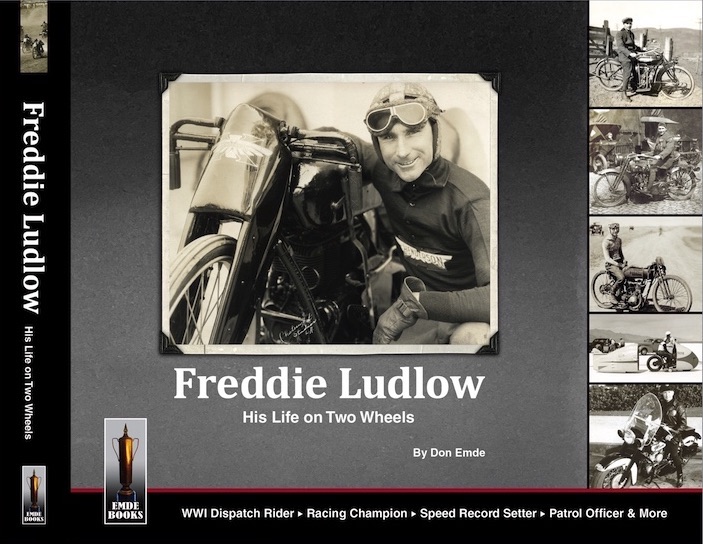
HOT OFF THE PRESS!
Freddie Ludlow. His Life on Two Wheels, by Don Emde
Back in 2020, The Speed Kings. The Rise & Fall of Motordrome Racing, by Don Emde, received the Best Book of the Year award by the Motor Press Guild. Now, you can be among the first to own a copy of his latest book, Freddie Ludlow. His Life on Two Wheels. Available now!
The seeds of the idea for this book were planted over twenty years ago when author Don Emde was entrusted with the care and ownership of a scrapbook of Freddie Ludlow, an early day motorcycle pioneer. With nearly 100 pages of the scrapbook photos organized chronologically with Ludlow’s own handwritten captions, what was obvious was that he was a man of adventure and competitive spirit, who also answered the call to serve his country.
Freddie Ludlow’s motorcycling life began as a delivery boy for Western Union on the streets of downtown Los Angeles around 1910. Local competitions followed until he enlisted in the Army and put his motorcycling experiences as a rider and mechanic to use in Europe during World War I. Upon his return home, Ludlow became one of the top motorcycle racers in the United States, rising to the level of National Champion in 1921. A few years later, his sense of service again saw him finding ways to put motorcycles to good use when he became a motor patrol officer in Pasadena, California, a job that he would have for the next thirty years.
His new “day job” didn’t mean, though, that Freddie was done raising the bar in the motorcycle sport when it came to speed and performance. Through the 1920s and ‘30s, he set numerous speed records on the hard packed sand at Daytona Beach, Florida; on the Bonneville Salt Flats, even along a stretch of public road near San Bernardino, California.
Freddie Ludlow died in 1983, but his amazing motorcycling life lives on in Freddie Ludlow. His Life on Two Wheels. It features not only his scrapbook pages but also many pages written by Don Emde filled with back stories and additional rare and historic photographs of Ludlow and many other legendary racers who were his competitors.
176 pages – Hardbound – 10 x 12 inches
Highly illustrated – 400+ photos and related images
Printed in sepia-tone throughout with retouched black & white photos from Freddie Ludlow’s scrapbook pages, plus some limited color images.
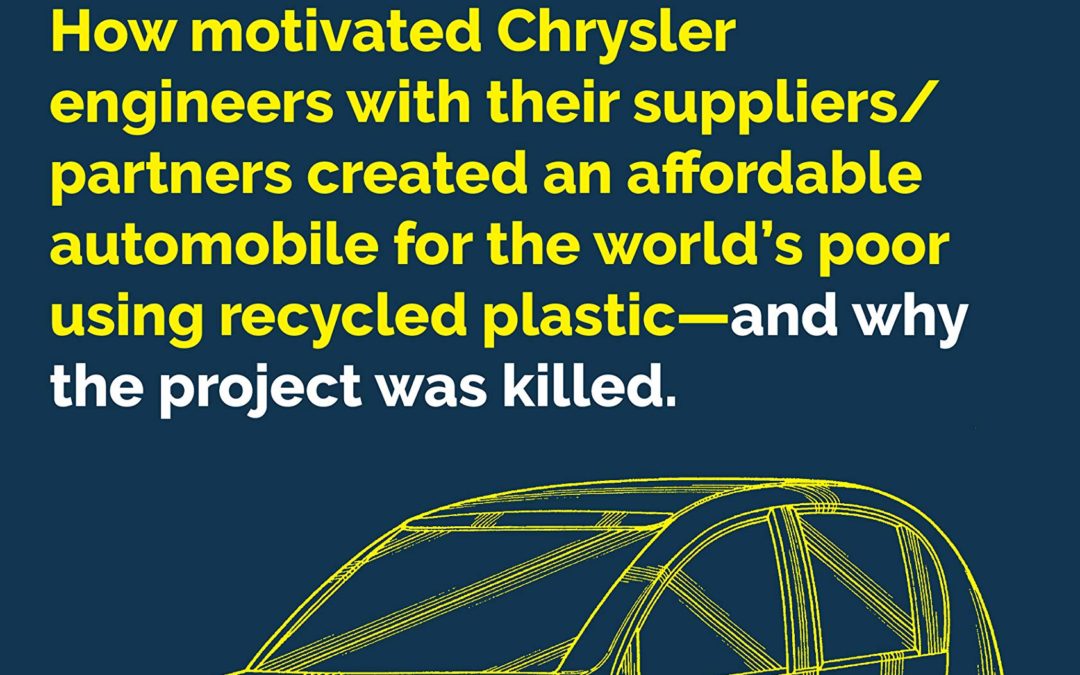
In the early 1990s François Castaing challenged a group of free-spirited Chrysler engineers to design and build a unique automobile for the vast number of people around the world who could afford nothing but a bicycle. This project became known internally as The China Car.
This book closely examines the challenges of producing plastic car bodywork, the difficulties of selling the car inside the company as well as outside to consumers, and the reasons why the project was unsuccessful and finally canceled. It also provides an unflinching look at how decisions were made at Chrysler.
Early on, the team discovered that molding large parts of the new vehicle in recycled plastic might be the only way to achieve their goal. Polyethylene Terephthalate or PET is the common plastic material most of our bottles are made of. PET is safe, reusable, and inexpensive, but as an example, we in the USA throw away 35 billion empty bottles every year to landfills, streets, parks, and waterways.
Despite overcoming technical hurdles thanks to the strong interpersonal relationships and problem solving between engineers and their suppliers, including the car s successful use of recycled, molded PET bodywork, the China Car never reached the market.
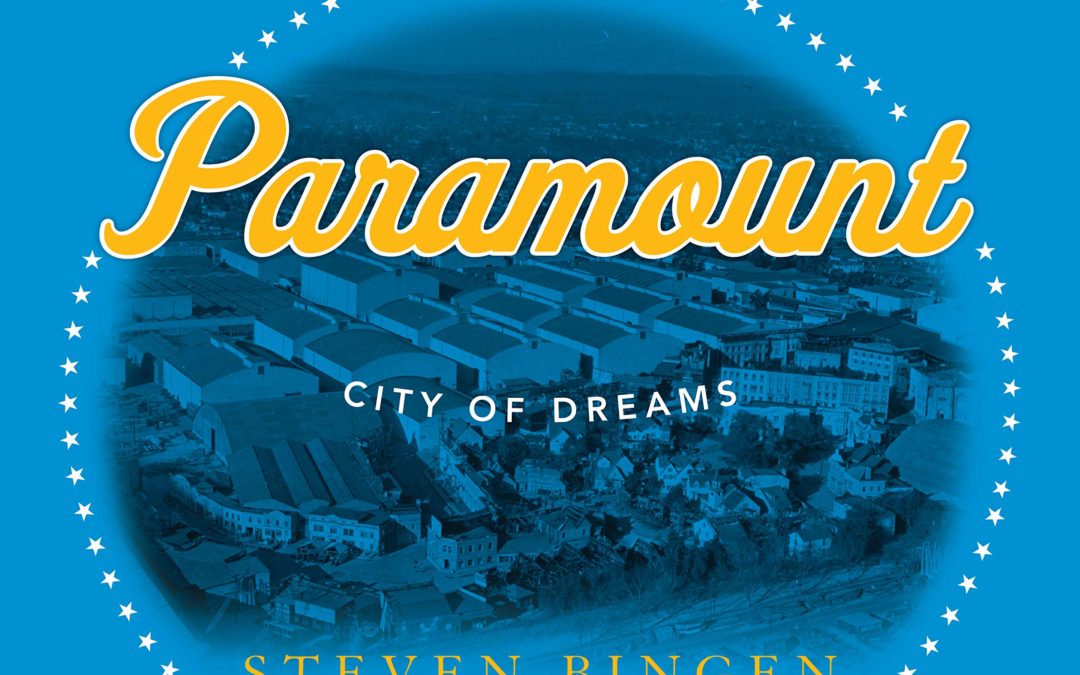
Paramount: City of Dreams brings to life the operations of the world’s grandest movie lot as never before by opening its famous gates and revealing – for the first time – the wonderful myriad of sound stages and outdoor sets where, for one hundred years, Paramount has produced the world’s most famous films. With hundreds and hundreds of rare and unpublished photographs in color and black & white, readers are launched aboard a fun and entertaining “virtual tour” of Hollywood’s first, most famous and most mysterious motion picture studio. Paramount is a self-contained city. But unlike any community in the real world, this city’s streets and lawns, its bungalows and back lots, will be familiar even to those who have never been there. Now, for the first time, these much-filmed, much-haunted acres will be explored and the mysteries and myths peeled away – bringing into focus the greatest of all of Hollywood’s legendary dream factories.
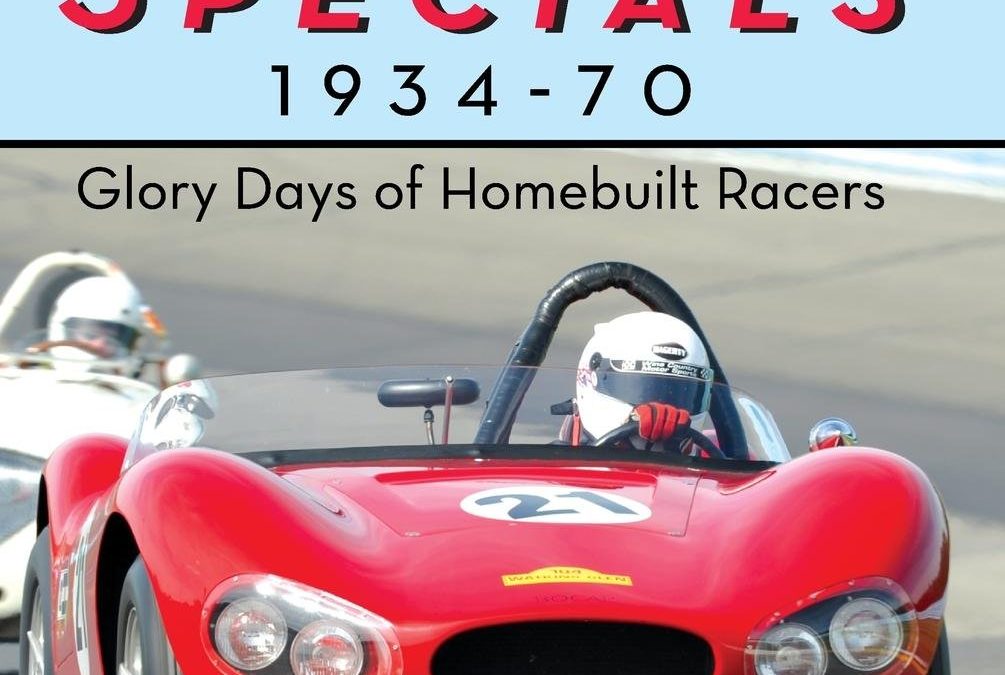
Once upon a time, there was a guy named Max Balchowsky who decided he wanted to beat Ferrari and Jaguar at their own game-road racing. The trouble was, he didn’t have the cash for a factory racer. So he built his own. Using a Ford homemade tube frame, a souped-up Buick V-8 and running on recapped whitewalls, Ol’ Yaller whipped them all.
Welcome to American Road Race Specials 1934-70. These were the glory days of road racing in the United States, from the first races between imported MGs to the world-winning Made-in-the-USA Scarabs and Chaparrals, and on toe the downfall of the Shadow.
This is the story of the men who built and ran their own homemade cars in pioneer SCCA and Cal Club races on town streets, airports and then the first purpose-built American racetracks. Here is Jim Hall, Lance Reventlow, Ken Miles, Carroll Shelby, Ak Miller, Balchowsky, Troutman and Barnes, Phil Hill, Dan Gurney, Roger Penske, George Follmer, and all the rest. . . .
And the cars: Ol’ Yaller, Cunningham, Scarab, Chaparral, Kurtis, Devin, Zerex Special, Bocar, Caballo de Hierro, Pooper, Shadow, Ferraris with Chevy V-8s and every other possible chassis-engine combination a racer could think of. Some were crude, others deceptively homespun; most were half hot rod, half sports car-all of them were unique and built with passion.

The German A4 rocket, or V2 – ‘Vergeltungswaffen Zwei’ (Vengeance Weapon 2), was the most sophisticated and advanced weapon developed in Europe during the Second World War. From September 1944 to March 1945, German army launch teams fired more than 3,000 V2 rockets at targets in England, France, Belgium and even within Germany itself. Many V2s were fired from mobile launch sites and from concealed wooded areas, using fleets of transporters and trailers with sophisticated ancillary and support vehicles. Traveling at the edge of space, the V2 rockets fell without warning at supersonic speeds, turning buildings and streets into cratered rubble, and terrorizing the civilians targeted by these attacks.
Drawing on a wide range of archive sources, rare personal accounts and interviews conducted with personnel associated with the A4/V2 program, rocketry expert Murray R. Barber traces the origins of the V2 and presents a detailed view of the research conducted at the secret, experimental rocket-testing facility at Kummersdorf West and the vast, infamous base at Peenemunde. This important new work reveals the transformation of the rocket into a weapon of war and describes the A4 in detail as well as the intense and often difficult intelligence effort by the Allies to discover more about this highly secret and unprecedented weapon, and to destroy it.
The author also describes the field-testing of the A4 rocket, its reliability problems and the remedies and compromises employed to deal with them. He reveals the activities of the SS and their machinations to gain control of the rocket program from the Wehrmacht, as well as the subsequent operational deployment of the V2 in Operation Penguin, the ‘vengeance’ offensive against the British Isles.
Illustrated throughout with rare and many previously unseen images (including color photographs), technical drawings and maps, this is the most comprehensive book ever on the V2, and includes important new details of the post-war development and testing of the rocket and its role in the dawning of the space age.
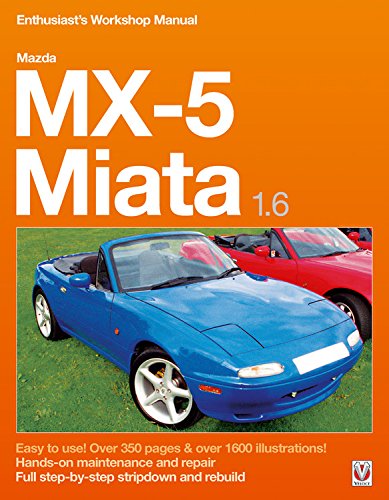
With open-topped styling and performance evocative of the classic sportscars of the 1960s, the Mazda MX-5/Eunos had to be a huge international success – and that’s exactly what it’s become. Now a familiar sight on the streets and boulevards of the world, the MX-5 is owned by real enthusiasts, the kind of people who will want to have hands-on involvement with the maintenance and repair of their prized possession. For those enthusiasts, here is what we believe to be the best, easiest to use workshop manual in the world.
Author Rod Grainger set out to create a new kind of owner’s workshop manual – friendly, easy to understand, easy to use, and yet more detailed than any other manual currently available: two years later, the Mazda MX-5 Miata 1.6 Enthusiast’s Workshop Manual was the result. Rod, and fellow enthusiasts Pete and Judith, stripped down an MX-5 in an ordinary domestic garage using ordinary tools and, in the process, took over 1,500 step-by-step photographs. The result of all this work is a superbly detailed text which passes on to the reader every detail of important jobs, including how problems can be overcome without resorting to special tools. This manual even tells the reader the size of nuts and bolts so they can start work with the right tools and all clearances and torque values are given in the text as the reader needs them. At paragraph level, a unique symbol system provides cross-references or tells the reader that there are helpful associated photos, drawings and tables. The dreaded words “reassembly is a reversal of the dismantling procedure” are banned, and every task, from changing a bulb to rebuilding the gearbox, is described in full. Besides detailed coverage of maintenance and repairs, this manual includes advice on rustproofing, cosmetic tuning and mechanical tuning. Rod’s manual was prepared with the assistance of Mazda, and it applies to all 1.6 litre models built between 1989 and 1995. Most of the manual is relevant to later 1.6 litre models, too.
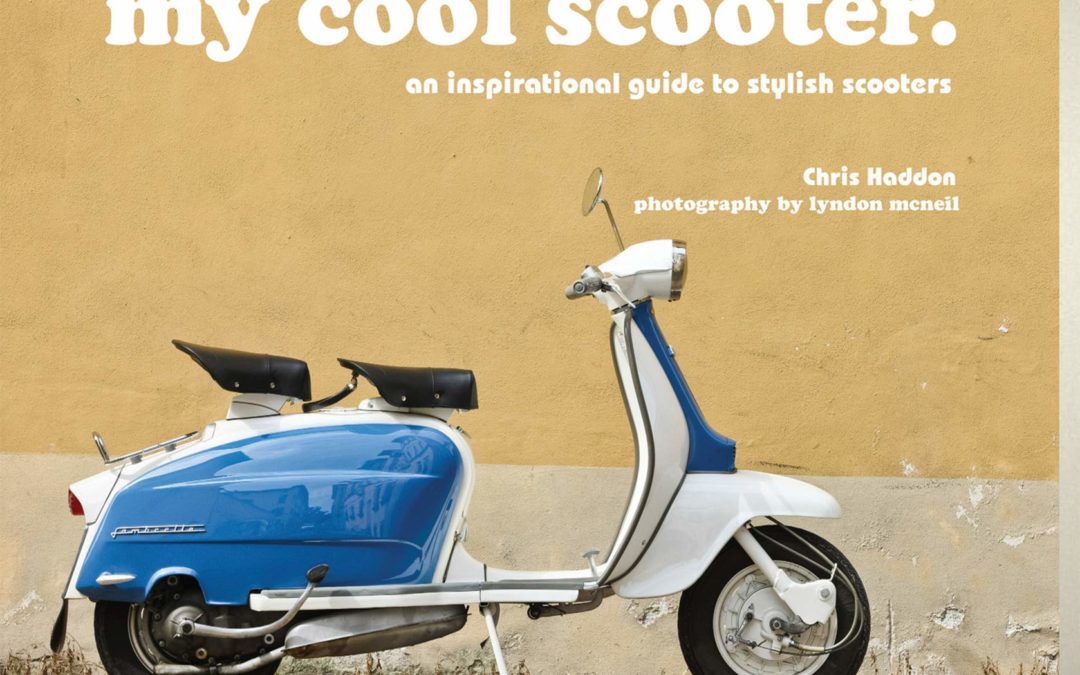
In terms of public image, the scooter has long played second fiddle to the motorcycle. Of course, there is a large dose of stereotype in the readings of both kinds of machines and at heart both have provided the same thing: escape, independence, mobility and a certain kind of cool. Following on from Chris Haddon’s highly successful my cool motorcycle, my cool scooter showcases beautiful scooters from all corners of the world and celebrates the scooter’s history thus far.The humble scooter is much more than a mode of transport – it is fashionable, stylish and trendy. As many of the stories featured in this book demonstrate, owners take their scooters on miraculous adventures from city streets to glorious country escapes. The book explores the most iconic brands of scooter from the well-known Vespa to the classic Goggo. Each section covers a selection of historical information, owners’ stories and vehicle notes. For scooter owners or those interested in scooter history this book will inspire and intrigue readers.

Are phantoms “alive” and walking the streets of Tinseltown and beyond?
Hollywood. Film capital of the world. Haunted Hollywood brings together twenty-five stories that capture both the spirit—and the spirits—of Tinseltown. These tales concern historic landmarks, theaters, watering holes, hotels, and houses that are haunted by movie stars, television personalities, and other celebrities. You will be shivering in your seat as you read about all these and more:
• Film siren Jean Harlow died at only twenty-six, but many believe she’s still “living” in her old home outside Beverly Hills.
• Elke Sommer, the German-born actress and artist, is convinced a ghost saved her life by waking her after her house caught fire. Who’s to say?
• John Wayne has ridden off into the Final Sunset, but he apparently misses his private yacht. He’s been known to come aboard from time to time. . .

When American Cars were a Way of Life
This book will allow you to enter the magical world of the historic American automobile with the aid of outstanding period photographs. Over 450 pages containing more than 600 pictures, selected by the author with informative captions, capturing moments in life associated with cars made in the USA. A fascinating tour using the automobile to illustrate American society, from the ’30s to the end of the ’70s, creating an exciting and unforgettable journey through time. A picture is worth a thousand words. With this in mind, this book illustrates an unforgettable bygone age. Retro Graphic will immerse you in the greatest history of the American automobile, from the 1930s to the end of the ’70s, with fascinating and previously unpublished photographs of the era. Retro Graphic is much more than simply a collection of photos, it is an atrtistic fresco of the US automobile seen through society at the time. A picturesque historical trip through the last century, which thanks to American cars has been impressed on our collective memories. When Detroit was known as the centre of the world, the American automobile was a way of life. A time when the car was a triumph of human style and design. When it was part of the choreography of the city streets and the landscape. When it became the indispensable co-star in films of the era. The American automobile: when it was an iconic companion through every stage of life. Title: RETRO GRAPHIC Dimensions: 24,5×30,5 cm Text: English and Italian Author: Gian Paolo Varetto Editor: Edizioni GP Pages: 450 Photos: over 600 b/w and colour Publication

Whether it’s a new Formula One V10 wailing at almost 20,000rpm or the metallic howl of a classic V12, there is nothing on earth like the sound of a racing car at full speed – and if it’s a bright red Ferrari screaming by flat-out, then so much the better.
“Red Noise” has been produced by broadcast audio specialists to bring those sounds right into your living room, your car or your stereo headphones. It utilises incredible recordings made in areas that the general public can never hope to reach….with microphones mounted on the trackside guard rails, and even from right inside the famous Monaco tunnel!
Listen to the sounds of Ferraris, Maseratis and Alfa Romeos spanning more than 75 years of motor racing history and featuring the world’s most famous Grand Prix cars.
This is a genuinely unique aural experience, so push the ‘play’ button, close your eyes and let your imagination and “Red Noise” take you right to the trackside.
Ferraris – Old and New1. See Red, Hear Red! The Vintage Sports Car Club stages an annual meeting at Donington Park that is themed around Italian racing cars. ‘See Red’ is the name of the VSCC meeting and we went there to give you the chance to ‘Hear Red’ ! First there’s the harsh engine notes of a 1980 Ferrari 312T5 ‘flat-12’ (a car actually driven by Gilles Villeneuve!) This is followed by an ex-Michael Schumacher team car from 2002 which we hear idling, picking up the revs, warming up, then finally pulling out of the pits with that distinctive V10 howl.
2. Monaco Ferrari Parade There was a fantastic gathering of Ferraris at the Monaco Historic Grand Prix in 2004. We were there to record all those incredible sounds! Cars ranged from the very first Type 125 1500cc supercharged GP car as driven by Alberto Ascari to a 21st-century Schumacher V10. In fact, there were no less than five vee-tens on hand – two Eddie Irvine cars from 1997 and three Schumacher cars from 1998/99 and 2000.
3. Picking up the Pace More from La Piscine as the real demonstration got under way and the cars picked up to racing speeds. No wonder the Italian commentator was getting excited!
4. Old and New in Action Old and new cars take La Piscine en masse. The field includes both four-cylinder and V12 cars from the ‘fifties, a 3-litre Type 312 V12 from 1968 and no less than seven Type 312 flat-twelve ‘boxer’ engine cars. From more recent times there were V12s as driven by Michele Alboreto in 1987, Nigel Mansell in 1990 and Alain Prost in 1991. And last, but very far from least, were the five Irvine and Schumacher vee-tens! They all mean music to the ears of the ‘Ferraristi’….
5. More from Monaco More ‘red noise’ from the Monaco 2004 Ferrari tribute high-speed demonstration laps. Similar to the previous tracks but too good to waste – especially as we were recording with microphones actually right on the Monaco trackside guard rails!
6. Flat-Out Red! And now for a change of recording point – here are Ferraris- old and new – passing at speed on the Monaco start/finish straight.
7. Generations Apart A 1999 ex-Schumacher Ferrari V10 takes La Piscine in conjunction with a rear-engined Ferrari 246 ‘Dino’ V6 that Italy’s Lorenzo Bandini took to second place here at Monaco in 1966. Then comes a 2.5 litre Ferrari Type 625 – the car that Frenchman, Maurice Trintignant, won Monaco with in 1955. The old front-engined ‘four’ takes La Piscine in conjunction with another modern Ferrari V10.
8. The Ferrari Type 312 V12 Sit back and listen to the first Ferrari Type 312 warming up and blasting through the Monaco tunnel.
9. Jackie Ickx Remembers Belgian Grand Prix and Le Mans star, Jackie Ickx, was a young Ferrari driver in the early nineteen-seventies. He remembers those times for us and tells us what it was like to race at Monaco back then.
10. Flat-Twelve Ferraris Not until Ferrari re-designed its 3-litre V12 did they start scoring World Championship successes again. It powered Niki Lauda to world titles in 1975 and 1977, as well as Jody Scheckter in 1979. The engine had a distinctly harsh note. We hear it warming up at Monaco, then making several echoing passes through the Monaco tunnel and, finally, negotiating the La Piscine sequence of tight turns.
11. The ‘Other Flat-Twelve’ There was another ‘flat-twelve’ built in Italy during the seventies, this one by the Alfa Romeo team in Milan. This is what that car would have sounded like back then, warming up and then blasting off, flat-out.
12. The Last F1 Vee-Twelves Ferrari stuck with V12 engine power right through the mid-nineties with Frenchman, Jean Alesi and Austria’s Gerhardt Berger driving the Type 412 team cars until the end of the 1995 season. By then, it was obvious that the V10 layout was definitely the most efficient of all of the Formula One options. Even so, the heavier, longer V12 took the 412 to a number of GP wins – and it sounded great in the process!
13. Into the 21st Century This is the unmistakable sound of V10-powered Ferraris howling by our microphones on the trackside barriers. First we hear some individual passes, then a whole group of vee-tens finish the track. These are all cars driven by either Michael Schumacher or Eddie Irvine between 1997 and 2000.
Maserati from Modena
14. Vintage Red Maserati is one of the oldest names in motorsport. Listen to a couple of vintage Maserati racers warming up – a four-cylinder 4CLM from 1939 and a six-cylinder 6CM from the 1937 season. These supercharged 1500cc cars would have raced in the ‘voiturette’ class – the nineteen-thirties equivalent of the Formula Two (or GP2) category.
15. A Fifties Favourite The six-cylinder Maserati 250F was one of the favourite 2.5 litre Formula One cars of the fifties – both with the fans and with its drivers. Listen to a group of them fire up, pull out of pits and then pass by on a flying lap.
16. Maseratis En Masse! A full field of twenty cars in a ‘Maserati-only’ race at the Vintage Sports Car Club’s ‘See Red’ event at Donington Park. They range from pre-war four, six and eight-cylinder supercharged cars to a whole pack of what is one of the most-admired Grand Prix cars of all time, the six-cylinder Maserati 250F. Hear them on the parade lap, and in race action through Redgate Corner.
17. Maserati at Monaco The throaty sound of a six-cylinder Maserati 250F as it warms up, followed by the rumble and the roar of a full field of ‘fifties Formula One cars on their warm-up lap.
18. Monaco Shark Hunt! The three-pronged trident is famous as the weapon of Neptune, or Poseidon – the God of the Sea and it has also always been the emblem of Maserati. So it’s perhaps appropriate that we hear a pack of 250F Maseratis chasing a Ferrari Type 555 ‘Squalo’ – or ‘Shark’ through the tight left-hander before Monaco’s Rascasse hairpin.
19. GP Rivals Warm Up A Bugatti Type 35 warms up in the Monaco pits. It carries the racing blue of France where the cars were built. Then an Alfa Romeo P3 is push-started into life and joins the mechanical chorus.
20. Right on the Rail! A full field of more than thirty great cars of ‘the golden age’ rumble around on a warm-up lap, take the start and attack the opening laps of a race around the Monaco streets. You are right up with the action thanks to our stereo microphones positioned right on the trackside safety barriers.
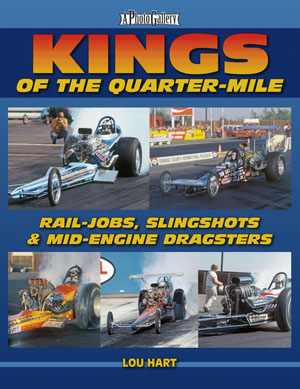
When our young heroes began returning from World War II, they applied the knowledge gained from Uncle Sam towards the fledgling hot rod movement. While speeds increased, rodders learned the hard way just how dangerous it was to “drag it out” on the city streets. In the mid 50s, organized drag racing gave hot rodders a safe place to race. Cars evolved from pre-war coupes and sedans to crude “rail jobs,” which were stripped and narrowed frame rails with nothing more than an engine, driveline, seat, and steering gear. As hot rodders were the true Mothers of Invention, the cars later became hand-made, finely crafted “Slingshot Dragsters.” Dubbed the “Kings of the Sport,” these supercharged, fuel-injected Slingshots burned exotic fuels and captured the attention of every young enthusiast from coast to coast. The cars dazzled with gleaming chrome, Candy Apple, Pearlescent, and Metalflake paint jobs, while the nitromethane fuel produced an unforgettable thunderous sound. This new volume contains all the stars that waged war on quarter-mile strips of asphalt from California to Maine. It’s a vivid pictorial display that captures the true essence of extreme acceleration in all its glory.
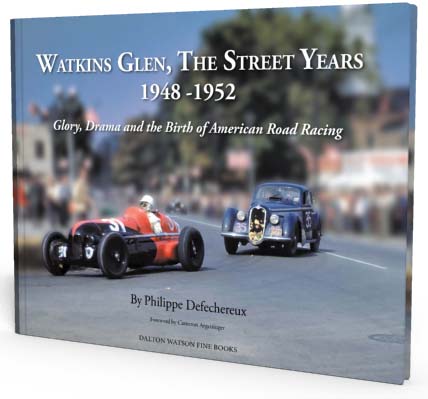
In 1948 Watkins Glen staged the first official American race for sports cars since the Vanderbilt Cup races of the early years of the century. This book is about the transformation of post-World War II racing in America and how road racing became a leading sport in the US, beginning at Watkins Glen and followed by Sebring, Daytona, Laguna Seca and other circuits.
These historic first five years are fundamental to road racing in America when the race was staged through the village streets and neighboring countryside until a permanent track was built in 1953. The races introduced famous international marques such as Ferrari, Jaguar, Porsche, Allard, Healey and Cunningham and encouraged a pantheon of great drivers to develop, among them, Briggs Cunningham, John Fitch, Phil Walters, Phil Hill, Jim Kimberly and Walt Hansgen. Later, from 1961 to 1980, Watkins Glen was the site of the Formula 1 United States Grand Prix.
Cameron Argetsinger, a lawyer and leader in upstate New York, was the man with the dream and the story of how he made it all happen against enormous odds is told in detail. It includes anecdotes and interviews contributed by many of the early participants, and has exclusive color photographs taken during years when color photography was practically unknown.
In 2011, Watkins Glen celebrates the 50th anniversary of its first Formula 1 Grand Prix. Had the early Sports Car Grand Prix of 1948-52 not taken place and quickly become a huge popular success, Watkins Glen would long ago have disappeared in the annals of history. Instead, it remains to this day a challenging race track, with two nationally televised events each year, and it is the home of the world’s first Motor Racing Research Library.
Over 300 photographs provide vivid and fascinating illustrations of the men and machines who threaded together every part of this extraordinary story. Full race results and statistics for all entrants in the 13 races run between 1948 and 1952 are also provided in detail. A final chapter shows how many of the race cars from the early years are now highly valued and are prize-winners at concours events.
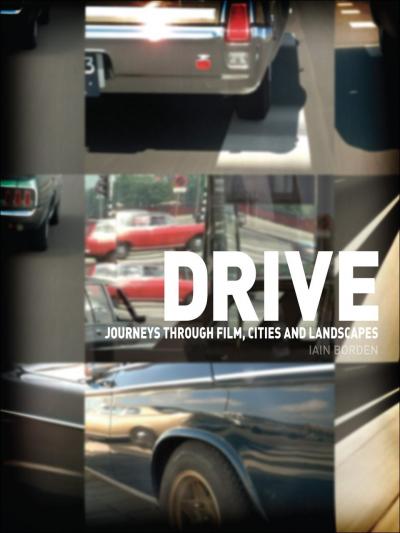
““The open road”—it’s a phrase that calls to mind a sense of freedom, adventure, and new possibilities that make driving one of our most liberating activities. In Drive, Iain Borden explores the way driving allows us to encounter landscapes and cities around the world. He takes particular notice of how driving is portrayed in film from America to Europe to Asia and from Hollywood to the avant-garde, covering over a century of history and referencing hundreds of movies.
From the dusty landscapes of The Grapes of Wrath to the city streets of The Italian Job; from the aesthetic delights of Rain Man and Traffic to the existential musings of Thelma and Louise and Vanishing Point;from the freeway pleasures of Radio On and London Orbital to the high-speed dangers of Crash, Bullitt, and C’était un Rendezvous; this book shows how driving with different speeds, cars, roads, and cities provides experiences and challenges beyond compare. Borden concludes that as an integral part of modern life, car driving is something to be celebrated and even encouraged, making Drive a timely riposte to anti-car attitudes, and those blind to the richness of life behind the wheel.
”
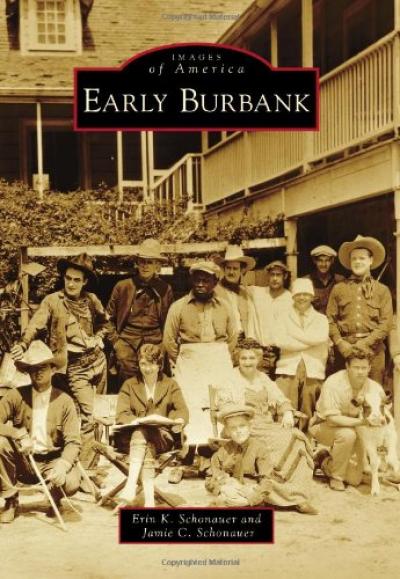
Burbank is an innovator, a world traveler a city with artistic flair and creativity. From the entertainment industry taking up residence in the early 20th century to the Lockheed Aircraft Company opening shop in 1928, Burbank’s masterpieces have transcended the coasts. Films shot on Burbank back lots and streets have entertained audiences worldwide. Lockheed planes built on Burbank soil flew across the world with the likes of Amelia Earhart and Charles Lindbergh. Once a robust farming community, Burbank, founded on May 1, 1887, and later incorporated as a city on July 8, 1911, dons its name from Dr. David Burbank, a New Hampshire born dentist who, in 1867, bought over 9,000 acres of land amid the sun-kissed foothills of the Verdugo Mountains land that was awaiting creative cultivation.

Architect John Parkinson died in 1935, and the Los Angeles Times praised him: “Future generations have only to walk through the streets of Los Angeles to be reminded how much John Parkinson in his lifetime contributed to the city that grew up under his hand.” In Iconic Vision: John Parkinson, Architect of Los Angeles, author Stephen Gee proves that this singular visionary created the look of America’s most dynamic metropolis, long before the world recognized the city’s importance. Consider that among more than four hundred buildings in the City of Angels that carried his architectural imprimatur, John Parkinson designed:
- Los Angeles City Hall, the most iconic building in California, the tower that changed a futuristic city’s skyline forever;
- Bullock’s Wilshire, the towering structure that rivals the Chrysler Building as America’s premier Art Deco edifice;
- Los Angeles Memorial Coliseum, the world’s only modern stadium to host two Olympic Games, 1932 and 1984–and still home to the USC Trojans;
- Los Angeles Union Station, the Mission-Moderne-Art Deco masterpiece that brought together California’s railroads and became a legend before the first trains roared in.
Iconic Vision, the first biography of the master architect, documents–in remarkable detail and images–Parkinson’s monumental contributions to the city he loved. Although other architects’ names have become synonymous with the city, John Parkinson designed more landmark buildings in Los Angeles than any other architect, living or dead. And, while other architects may have taken credit for Parkinson’s designs, Stephen Gee’s penetrating biography establishes the truth. He tells the story of a man who envisioned tomorrow.






















